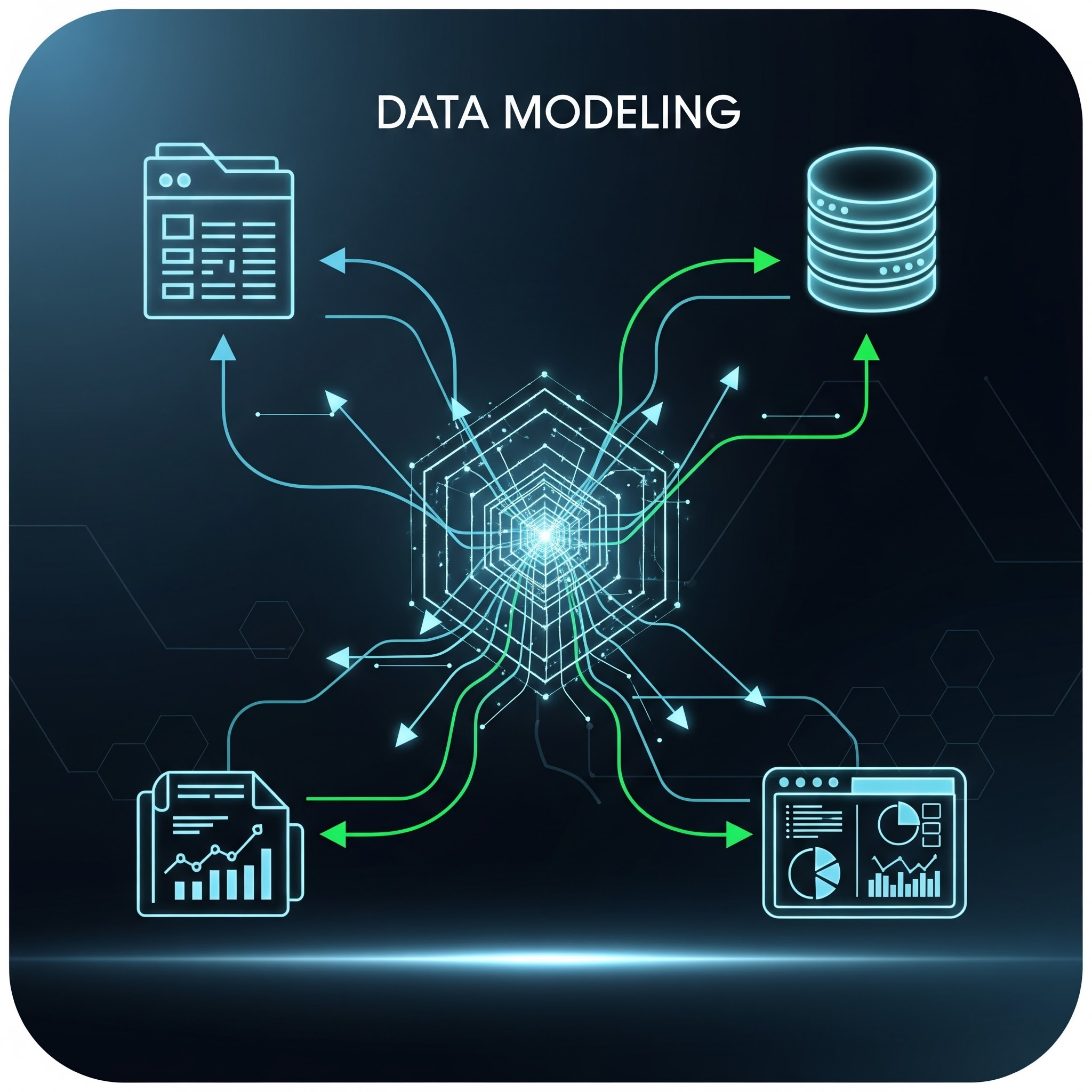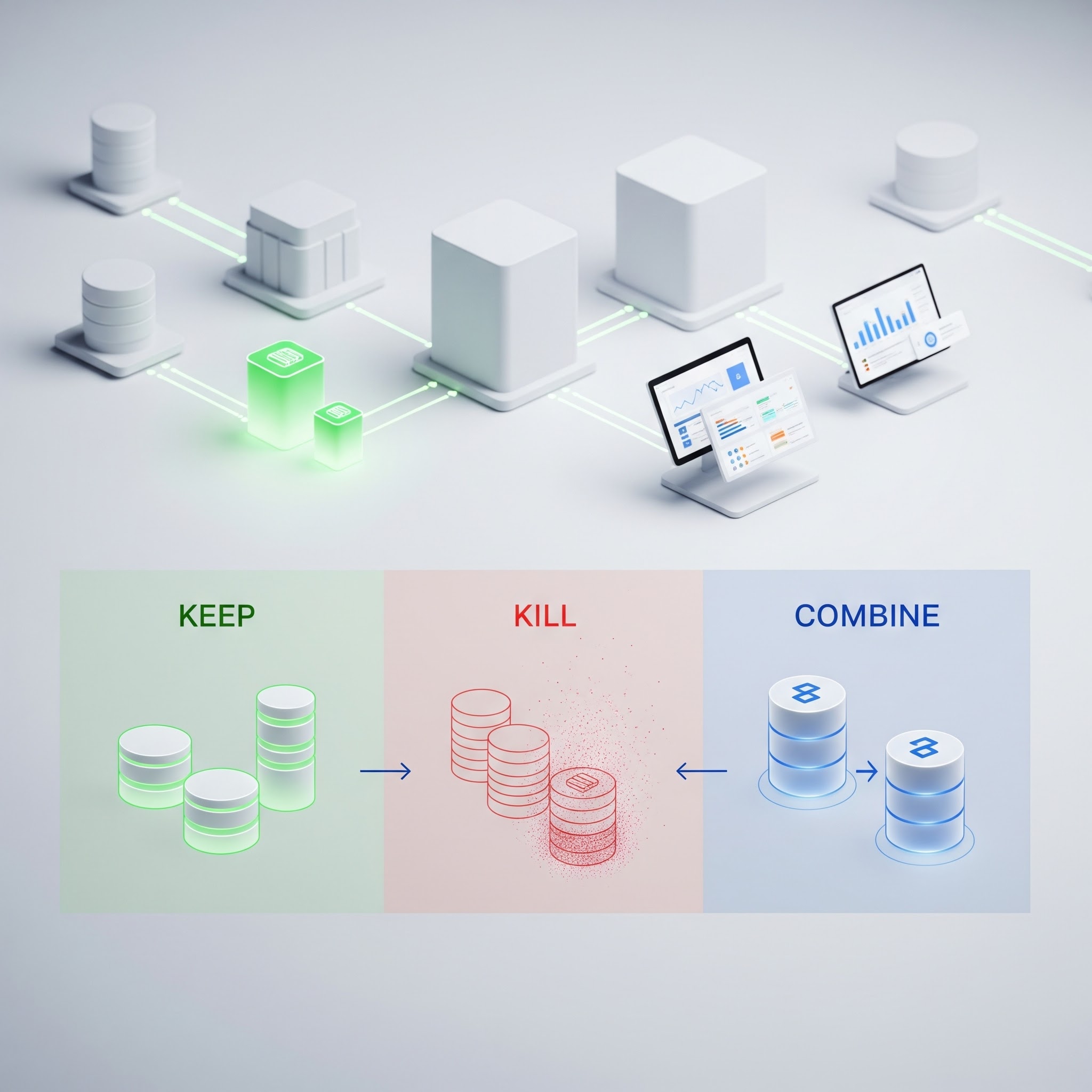How to Build an Enterprise Model Through Domains


As organizations grow, so do their systems, datasets, and stakeholders, resulting in fragmented architectures that are difficult to maintain, govern, and understand. That’s where domain-driven modeling comes in. Rather than designing a single monolithic model, domain-driven modeling encourages organizations to break their enterprise data environment into manageable parts—or domains. This approach not only improves clarity and scalability, but it also mirrors how the business actually operates.
What are domains in enterprise data modeling?
Unlike monolithic data models that attempt to represent an entire organization's data landscape in one structure, domains are a logical grouping of related business concepts, processes, or entities. Domains often align with departments, functions, or key subject areas and aim to foster clarity by ensuring data models align with business teams and their workflows.
The goal of domain modeling isn’t just modularity—it’s clarity. By organizing your data model into domains, you give teams ownership over their slice of the model while maintaining awareness at the enterprise level. This balance between autonomy and alignment makes it easier to scale data initiatives, manage complexity, and ensure that every part of the organization speaks a common data language.
Why domain-based modeling matters
Domain-based modeling brings structure and clarity to complex data environments. By breaking down the enterprise into logical domains like sales or finance, your team can design models that are more scalable, reusable, and aligned with how your business actually operates.
This practice not only improves cross-functional collaboration, but also supports modular data architecture, making it easier to onboard new systems, adapt to organizational change, and grow your data products over time. It creates a shared mental model for both technical and business stakeholders, making it easier to define, maintain, and evolve your data assets with confidence.
This approach also sets the stage for more efficient governance and change management. By grounding your model in business logic from the start, you reduce translation errors between teams and ensure that your architecture evolves in tandem with organizational priorities. With well-defined domains, it becomes much easier to delegate ownership, track dependencies, and scale data efforts with less friction.
When to introduce domain modeling in your data maturity journey
Domain-based modeling delivers the most value when your data environment has reached a certain level of complexity. If your organization is struggling with siloed reporting, duplicate logic across teams, or difficulty onboarding new data systems, it's a strong signal that you're ready for a more modular approach. Domain modeling also supports scalability during digital transformation, product expansion, or mergers and acquisitions—times when aligning teams around a shared data language is especially critical.
That said, you don’t need to be a Fortune 500 company to start modeling with domains. Even smaller teams can benefit by applying the principles of domain alignment to key subject areas or product lines. The earlier you establish a domain-based foundation, the easier it becomes to scale your data systems and collaboration practices as your organization grows.
- Identify business-aligned domains
To kick things off, start by mapping out how your organization operates. Look at your org chart, business capabilities, product lines, and customer journeys. Common enterprise domains include:
- Product
- Customer
- Support & service
- Compliance & risk
- Billing & invoicing
- Order & fulfilment
It’s important to choose domains that reflect meaningful separations of logic and ownership. If two areas of the business rarely interact, they likely deserve their own domains. Identifying domains should be a collaborative effort that includes both technical and business perspectives. Talk to department heads, review strategic initiatives, and analyze current reporting needs. This ensures that your domain structure reflects real workflows and decision-making patterns.
- Define domain boundaries and responsibilities
Each domain should encapsulate its own logic, definitions, and structure and it should also define how it interacts with adjacent domains. For example, your Order Management domain might depend on definitions from the Customer and Product domains. It’s important to make those dependencies explicit through documentation, shared glossaries, and integration points.
To avoid confusion and misalignment, document which team owns each domain and outline their responsibilities. Clarify which metrics, processes, and entities fall within each boundary. This not only prevents redundancy but also streamlines change management and onboarding.
- Model conceptually within each domain
Once domains are defined, develop a conceptual model for each one. This involves identifying the key entities and their relationships in plain business language—before diving into schemas or physical designs.
For example, your customer domain might include:
- Account
- Customer
Subscription
Mapping these out visually, along with their relationships, helps ensure alignment with business stakeholders and sets the stage for deeper technical modeling. Conceptual modeling centers teams on what truly matters: the real-world meaning behind the data. By encouraging early feedback and reducing assumptions, it ensures that data structures align with business context. To make this process effective, use tools that support visual modeling and real-time collaboration in context.
- Establish glossary terms per domain
Next, it's important to establish a glossary for terms that pertain to each domain and ensure they’re consistently used across models and teams. When a term like “Active Customer” exists in multiple domains, each team should either agree on a shared definition or document domain-specific variations clearly.
Glossary terms should be connected to metrics, entities, and reports, not just stored in a static document. Embedding glossary terms in your modeling and analytics tools ensures consistency and enables data users to understand the logic behind the numbers.
- Enable ownership and governance per domain
One of the biggest advantages of domain modeling is the ability to assign local ownership. Instead of one central team being responsible for the entire model, you can assign stewardship per domain. This helps improve accountability, decision making, and feedback.
Establishing clear owners for each domain also enables timely updates, structured feedback, and stronger data quality practices. Domain stewards can advocate for their business area, flag emerging needs, and act as liaisons between the data team and domain users.
- Integrate domains into a unified enterprise model
Even though domains are modeled independently, they should fit together as part of a larger enterprise structure. Think of your enterprise model as a network of domains—connected through shared terms, interfaces, and governance practices.
When done well this approach supports:
- Business-user participation
- Scalable model development
- Lower maintenance overhead
- Clear documentation and lineage
To achieve this, define integration points between domains explicitly. Use shared keys, mapped terms, and common interfaces where necessary. Consider a central architecture team that supports cross-domain consistency without stifling local autonomy.
How domain modeling supports data products
Domain modeling isn’t just about model clarity—it’s a foundation for building modern data products. With well-defined domains, you can treat each one as a self-contained, governed unit of data delivery. This makes it easier to assign domain teams, define SLAs, and set quality standards.
For self-service analytics, domain-based models reduce ambiguity. When business users work within clearly bounded domains that are supported by glossary terms, discoverable metadata, and trustworthy models—they’re better equipped to explore data on their own. This empowers teams to generate insights faster while preserving governance and consistency. In practice, this means each domain can evolve at its own pace, support specific user needs, and contribute to a data ecosystem where responsibilities are clearly distributed.
Common pitfalls to avoid
Despite its benefits, domain-based modeling can go off course without the right foundation. One common mistake is letting system architecture define your domains which often leads to models that are technically accurate but misaligned with how the organization thinks and works. Another is modeling domains in isolation, without considering shared entities or interactions across the enterprise, which can create redundant logic and siloed definitions. Finally, teams often jump into physical design too early, skipping the conceptual and logical layers that drive alignment. Avoiding pitfalls requires deliberate planning, shared language, and a strong commitment to collaboration.
Domain-driven modeling is future-ready
Building an enterprise data model through domains isn’t just a technical strategy—it’s a way to align data with how your organization thinks, works, and evolves. By grounding your data design in business logic and distributing ownership across domains, you make your models easier to understand, adapt, and scale—now and in the future.
Ellie.ai helps teams model this way by making it easy to define domains, connect glossary terms, collaborate on conceptual design, and keep models aligned across teams. Explore the platform to see how domain-driven modeling can help you tame complexity, align stakeholders, and turn your data strategy into a competitive advantage.









